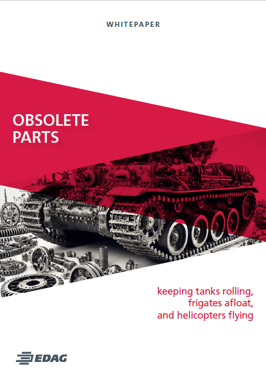Overcoming obsolescence in military equipment

All too often, tanks don't drive, helicopters don't fly, and frigates don't sail, but instead lie in dry dock because of a lack of spare parts. One of the reasons for this is that the service life of weapon systems, vehicles, ships, and aircraft is much longer than the production cycles of parts and components. When manufacturers discontinue these, the question arises as to how the systems can continue to be supplied with spare parts.
In the past, the approach was to hoard parts in order to secure high inventory levels. Another approach was to cannibalize part of the inventory – which was not a problem as long as troop strength continued to be reduced and surplus equipment was decommissioned. However, in a changed global situation, in which the German Armed Forces must be replenished with personnel, has new tasks to accomplish, and a failure rate of up to 60 percent for individual weapon systems can no longer be accepted, the question arises anew.
Our white paper "Obsolete Parts – Keeping Tanks Rolling, Frigates Afloat, and Helicopters Flying" describes what needs to be done on a technical level to ensure the availability of obsolete parts and what needs to be changed in terms of strategic and operational considerations on the logistics side in order to be able to rely on efficient and reliable supply chains even in the event of conflict. The focus is on the concept of a "defense supply chain" – and how it can be brought to life from a single source.
Download White paper now